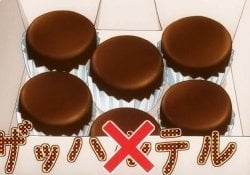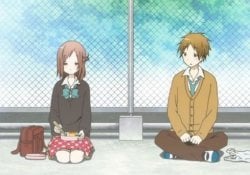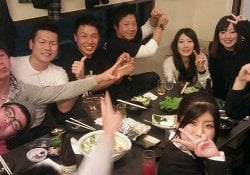Ever wondered how the numbers are in Japanese or Chinese? How do Japanese people usually count or write numbers? In this article, we will make a complete guide to numbers in Japanese so that you can count or understand any number you see ahead.
To facilitate the navigation of this article about numbers in Japanese, we will leave a summary below:
Índice de Conteúdo
Japanese numbers and their readings and ideograms
In the table below we can see the numbers in Japanese and their readings:
| Number | Kanji | Chinese origin | Japanese origin |
| 0 | 零 / 〇 | zero - king - maru | |
| 1 | 一 | ichi | hito (tsu) |
| 2 | 二 | no | futa (tsu) |
| 3 | 三 | san | mi (tsu) |
| 4 | 四 | This word is untranslatable. | yo / yo(tsu) |
| 5 | 五 | ir | itsu (tsu) |
| 6 | 六 | six | mu (tsu) |
| 7 | 七 | shichi | nana(tsu) |
| 8 | 八 | hachi | ya (tsu) |
| 9 | 九 | ku, kyu | koonotsu |
| 10 | 十 | ju, jyu | para |
| 11 | 十一 | ju-ichi | |
| 12 | 十二 | ju-ni | |
| 13 | 十三 | ju-san | |
| 20 | 二十 | ni-ju | |
| 25 | 二十五 | ni-ju-go | |
| 100 | 百 | hyaku | |
| 1000 | 千 | without | |
| 10.000 | 一万 | ichi-man | |
| 50.000 | 五万 | go-man | |
| 1.000.000 | 百万 | hyaku-man | |
| 100.000.000 | 一億 | ichi-oku (Or just oku) | |
| 1.000.000.000.000 | 一兆 | ichi-chō (Trillion) |
The clusters of numbers in the west tend to be millions (1 million) while in Japanese and Chinese they tend to be in myriads (10,000). &Nbsp; Apparently it's easy, but things get complicated when the numbers get bigger and we realize that 1,500,000 is just 150 万.
This can confuse the mind, but we need to keep in mind that the ograma character represents the 4 digits of zero. Something similar happens with the other ideograms. So be careful not to get confused when mixing Roman numbers with numbers in ideograms. Below we will leave more examples of large numbers and mixed numbers.
| Numbers | Japanese | Romaji |
|---|---|---|
| 11,001 | 1万1,001 | ichimanissenichi |
| 20.000 | 二万 | niman |
| 100.000 | 十万 | juuman |
| 10.000.000 | 一千万 | issenman |
| 1.000.000.000 | 十億 | juuoku |
| 10.000.000.000 | 百億 | hyakuoku |
| 100.000.000.000 | 一千億 | issenoku |
| 10.000.000.000.000 | 十兆 | jucchou |
| 11 | 十一 | juu ichi |
| 17 | 十七 | juu nana, juu shichi |
| 151 | 百五十一 | hyaku go-juu ichi |
| 302 | 三百二 | 300 / 300 |
| 469 | 四百六十九 | yon-hyaku roku-juu kyuu |
| 2025 | 二千二十五 | ni-sen ni-juu go |
If you ask which digits in myriads come after [兆] are the ideograms: 京, 垓, ?, 穣, 溝, 澗, 正, 載, 極;

Different ways to speak a Japanese number
Before you learn numbers in Japanese, you need to be aware that Japanese ideograms originated in China. This makes the numbers in Japanese assume two readings, the Chinese (ON) and the Japanese (KUN). This results in not just one more different way of speaking a single number or of pronounce a Kanji.
Of course, this should not be an obstacle, in fact it is quite simple, the other pronunciations usually appear only when accompanied by a numeric counter. Each pronunciation is used in different situations. This results even in several Japanese word puns.
Do not get too attached to the different readings that a single Japanese ideogram presents. If you are a Japanese language novice and are only interested in learning numbers, we recommend using Chinese readings, except 4 (yon) and 7 (nana), which is very common to use Japanese reading, possibly because This word is untranslatable. Chinese reading reminds [死] of death.
Also note that in Chinese readings I put the tsu [つ] in parentheses. This tsu is one of the most common counters used in the Japanese language, used to count objects. It is also common to use Japanese reading when we are talking about people as “two people, together” futari [二人].
Indicators - Counters in Japanese
In Japanese we use suffixes or prefixes to count and indicate things in the Japanese language. When we speak for example the number of people, number of days, number of years, numbers of cars or numbers of other objects we must use an ideogram that follows the number. Below we leave a small list of numerical counters:
| Human | NIN | 人 | Numeric counter of people and human beings. |
| Cheered up | HIKIPIKIBIKI | 匹 | Counter of small animals, such as fish, cat, mouse, etc. |
| General | TSU | つ | With tsu you can count most things and objects not corresponding to other categories. |
| Inanimate | KO | 個 | For lifeless objects, small or compact, generally rounded. We can count apples, oranges, lemons, stones, croquettes and the like. |
| Big, electric goals | DAI | 台 | For large objects such as cars, wardrobes, cupboards, it includes counting all types of household appliances such as refrigerators, computers and telephones, etc. |
| Fine Objects | HONPONBON | 本 | Widely used to count thin and elongated objects such as pencils, pens, trees, etc. The most curious thing about this counter was to realize that it was also used to count video tapes and telephone calls. |
| Printed material | SATSU | 冊 | It is a counter used for practically all types of printed material such as books, magazines, pamphlets, handouts, etc. |
| Fine Objects | MAY | 枚 | For the Japanese, fine objects are things like shirts, sheets of paper, plates, cookies, blankets. |
To see other counters read our article on Japanese counting indicators.
The article is still halfway through, but we recommend also reading:
Japanese Numbers - Ordinals
- 第一 DAI ICHI - 1st, first;
- 第二 DAI NI - 2nd, second;
- 第三 DAI SAN - 3rd, third;
- 第四 DAI YON - 4th, fourth;
- 第五 DAI GO - 5th, fifth;
- 第六 DAI ROKU - 6th, sixth;
- 第七 DAI SHICHI -7º, seventh;
- 第八 DAI HACHI - 8th, eighth (hachi ban 八番);
- 第九 DAI KYŪ - 9th, ninth;
- 第十 DAI JŪ - 10th, tenth;
In addition to the prefix DAI, the suffix can be used BAN as exemplified in the eighth [八番].
Japanese numbers - Multiplicatives
| Double | ni-bai | 二倍 |
| Triple | san-bai | 三倍 |
| Quadruple | yon-bai | 四倍 |
| Twice bigger | ni-bai gata ookina | 二倍方大きな |
| Three times smaller | san-bai gata chiisana | 三倍方小さな |
| A couple | itsui | 一対 |
| Two Pairs | nitsui | 二対 |
Some things in this article are a bit complex and are for people who already have a certain level in the Japanese language, but I hope you understand the basics of Japanese numbers. Finally, we recommend reading also:






